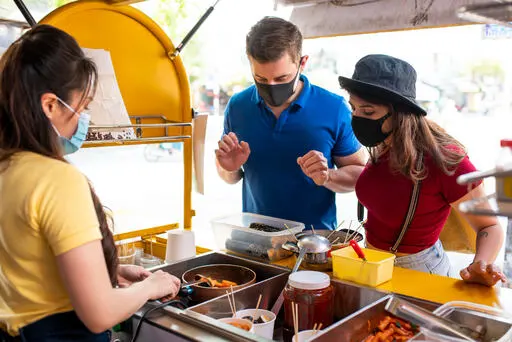Welcome to Good to Best, your go-to source for exploring the rich and diverse world of food. In this blog, we’ll take you on a flavorful journey that celebrates the universal love for food, emphasizing how it enhances our lifestyle. Dive into the vibrant and delectable world of food that brings people together, transcending boundaries and cultures.
Table of Contents
1. Introduction: The Universal Appeal of Food
Food is a universal language that unites people from all walks of life. It transcends borders, cultures, and lifestyles, creating connections and enriching our daily experiences. In this blog, we will explore various culinary delights that are beloved across the globe, offering a glimpse into the tastes that define our world. From savory to sweet, let’s embark on a journey of flavors that celebrate the essence of food in our lives.
2. The Cultural Tapestry of Food: The Global Influence of Asian Cuisine
Asian cuisine, with its rich flavors and unique ingredients, plays a significant role in shaping our food choices. The emphasis on fresh vegetables, aromatic herbs, and balanced spices not only enhances our lifestyle but also introduces us to a world of exotic tastes. Chinese, Japanese, Thai, and Korean cuisines, among others, offer an array of dishes that delight the palate and provide nutritional benefits. From the umami-packed ramen of Japan to the spicy curries of Thailand, Asian cuisine brings a burst of flavors that can transform our daily meals.
- Fusion Food: Blending Cultures
Fusion food is a testament to the universal appeal of culinary innovation. By combining elements from different cuisines, fusion dishes create a new and exciting culinary experience that reflects the dynamic nature of our lifestyle. Whether it’s Asian-inspired tacos or sushi burritos, these creative combinations bring a fresh perspective to our dining tables. The fusion food trend highlights how globalization influences our eating habits, allowing us to enjoy diverse flavors in a single dish. It also encourages culinary experimentation, leading to delicious and unique creations.
- The Rise of Fusion Cuisine
Fusion cuisine has gained popularity in recent years, driven by the desire for novel dining experiences. Chefs around the world are experimenting with ingredients and techniques from different cultures, resulting in dishes that are both innovative and comforting. This culinary creativity not only expands our palate but also bridges cultural gaps, fostering a deeper understanding and appreciation of diverse food traditions.
- Popular Fusion Dishes
Some popular fusion dishes include Korean BBQ tacos, where the bold flavors of Korean cuisine meet the casual comfort of Mexican street food. Similarly, the sushi burrito combines the freshness of sushi with the convenience of a burrito, making it a favorite among food enthusiasts. These dishes exemplify how fusion cuisine can transform familiar flavors into something extraordinary, enhancing our lifestyle with culinary diversity.
3. The Role of Food in Celebrations
Every culture has its own set of traditional foods that are an integral part of celebrations. These dishes not only symbolize joy and festivity but also highlight the importance of food in our lifestyle. From Chinese New Year dumplings to Indian Diwali sweets, festive foods are a delicious way to honor cultural heritage. These traditional dishes often carry symbolic meanings, such as prosperity, health, and happiness. They are lovingly prepared and shared with family and friends, strengthening bonds and creating lasting memories.
- Modern Celebrations with a Twist
Modern celebrations often incorporate a blend of traditional and contemporary dishes. This fusion reflects the evolving nature of our lifestyle, where we cherish our roots while embracing new culinary trends. For example, a Thanksgiving dinner might include a classic roast alongside sushi platters, showcasing the diverse tastes that define our food culture. This blend of old and new allows us to honor traditions while exploring new flavors, making celebrations more inclusive and enjoyable for everyone.
- Thanksgiving: A Global Feast
Thanksgiving, traditionally an American holiday, is now celebrated in various forms around the world. Families may include dishes from their cultural backgrounds, such as Korean kimchi or Italian pasta, alongside the traditional turkey and stuffing. This global approach to Thanksgiving enriches the holiday, reflecting the diverse lifestyles and culinary influences of modern society.
- New Year’s Eve: East Meets West
New Year’s Eve is another occasion where traditional and modern foods blend seamlessly. In addition to Western favorites like champagne and canapés, many people incorporate dishes from their cultural heritage. For instance, Japanese families may enjoy osechi ryori, a selection of special New Year’s foods, while also indulging in international cuisines. This eclectic mix enhances the festive spirit and allows everyone to celebrate their unique lifestyle.
4. Health and Wellness through Food: Nutrient-Rich Diets
A well-balanced diet is crucial for maintaining a healthy lifestyle. Incorporating a variety of nutrient-rich foods, such as fresh fruits, vegetables, and lean proteins, ensures that we receive the essential vitamins and minerals our bodies need. Foods like quinoa, avocados, and tofu are excellent choices for promoting overall well-being. These superfoods are packed with nutrients that support heart health, boost immunity, and provide sustained energy. By making mindful food choices, we can enhance our health and vitality.
- The Benefits of Superfoods
Superfoods like berries, nuts, and leafy greens are powerhouses of nutrition. They provide antioxidants, fiber, and essential vitamins that help protect against chronic diseases and support a healthy lifestyle. Incorporating these foods into our daily meals can significantly improve our health and well-being, making them an important part of a balanced diet.
- Creating Balanced Meals
Creating balanced meals involves combining different food groups to ensure a comprehensive intake of nutrients. For instance, a meal might include a portion of lean protein, a serving of whole grains, and a variety of colorful vegetables. This approach not only supports physical health but also enhances our lifestyle by promoting mindful and enjoyable eating habits.
- Mindful Eating Practices
Mindful eating encourages us to savor our food and appreciate its flavors and textures. This practice not only enhances our enjoyment of food but also promotes a healthier lifestyle by helping us make more conscious food choices. Techniques such as eating slowly and paying attention to hunger cues are simple yet effective ways to practice mindful eating. By focusing on the sensory experience of eating, we can better appreciate the quality and taste of our food, leading to greater satisfaction and reduced overeating.
- The Principles of Mindful Eating
Mindful eating involves being fully present during meals, paying attention to the taste, texture, and aroma of food. This practice helps us recognize hunger and fullness cues, preventing overeating and promoting a healthier relationship with food. By reducing distractions and savoring each bite, we can enhance our lifestyle and derive more satisfaction from our meals.
- Practical Tips for Mindful Eating
To practice mindful eating, start by creating a calm eating environment free from distractions like TV or smartphones. Take small bites, chew slowly, and pay attention to the flavors and textures of the food. Engage all your senses and take note of how the food makes you feel. These simple steps can transform your eating habits and improve your overall well-being.
5. A Taste of Local Life: The Charm of Street Food
Street food offers a unique glimpse into the local lifestyle and culinary traditions of a region. From bustling night markets in Taiwan to food stalls in Bangkok, street food is an integral part of the food culture, providing affordable and delicious options that reflect the essence of the community. Street vendors often specialize in a few dishes, perfecting their recipes over generations. This dedication results in mouth-watering delicacies that are beloved by locals and tourists alike. Exploring street food is an adventure in itself, offering a taste of authentic local flavors.

- Night Markets: A Culinary Wonderland
Night markets in Asia are vibrant hubs of food culture, offering a wide array of street foods. From grilled skewers to sweet treats, these markets provide a sensory overload of flavors and aromas. Visiting a night market is not only about enjoying delicious food but also about experiencing the local lifestyle and community spirit. The lively atmosphere and diverse food options make night markets a must-visit for any food lover.
- Street Food Festivals
Street food festivals around the world celebrate the diversity of global cuisine. These events bring together vendors from different backgrounds, offering a wide range of dishes that reflect various culinary traditions. Street food festivals are a great way to explore new flavors and learn about different cultures, all while enjoying a festive and communal atmosphere. They also provide an opportunity for street food vendors to showcase their skills and gain wider recognition.
- Iconic Street Foods from Around the World
Each country boasts its own iconic street foods that are a must-try for any food enthusiast. In Japan, takoyaki (octopus balls) are a popular street snack, while in Mexico, tacos al pastor capture the vibrant flavors of the region. These street foods not only satisfy our taste buds but also offer a rich cultural experience. In India, pani puri is a favorite, combining spicy, sweet, and tangy flavors in one bite. In the Middle East, shawarma wraps filled with marinated meats and fresh vegetables are a street food staple. Sampling these iconic dishes allows us to connect with different cultures through their culinary traditions.
6. Food as an Expression of Identity: Culinary Heritage and Traditions
Food is a powerful expression of cultural identity and heritage. Traditional recipes passed down through generations carry the history and values of a community. Preparing and sharing these dishes helps preserve cultural traditions and fosters a sense of belonging and pride in our lifestyle. Each recipe tells a story, reflecting the ingredients available, the climate, and the customs of a particular region. By preserving and honoring these culinary traditions, we keep our cultural heritage alive and vibrant.
- The Role of Family Recipes
Family recipes are treasured heirlooms that connect us to our ancestors and heritage. They reflect the tastes and preferences of previous generations, offering a window into their lifestyle and traditions. By cooking and sharing these recipes, we not only preserve our culinary heritage but also create new memories and traditions for future generations. Family recipes often hold sentimental value, making them a cherished part of our cultural identity.
- Celebrating Cultural Diversity
Embracing and celebrating cultural diversity through food enriches our lives and broadens our understanding of the world. Exploring different cuisines allows us to appreciate the unique flavors and techniques that define each culture’s culinary traditions. By sharing meals and recipes from various backgrounds, we foster mutual respect and understanding, creating a more inclusive and connected lifestyle.
- Exploring New Cuisines
As we grow older, our culinary journey often involves exploring new cuisines and flavors. Travelling to different countries, dining at diverse restaurants, and experimenting with new recipes at home all contribute to our expanding palate. This exploration not only enhances our lifestyle but also broadens our cultural understanding and appreciation. Trying new foods and cooking techniques can be a rewarding and adventurous aspect of our culinary journey.
7. The Future of Food: Trends and Innovations
- Sustainable and Ethical Eating
As awareness of environmental and ethical issues grows, more people are adopting sustainable eating practices. This shift towards plant-based diets, locally sourced ingredients, and reducing food waste reflects a conscious effort to align our lifestyle with the health of the planet. Innovative approaches, such as lab-grown meat and zero-waste cooking, are also gaining traction. These practices not only benefit the environment but also promote animal welfare and support local economies. By making sustainable food choices, we contribute to a healthier planet and a more equitable food system.
- Plant-Based Diets: A Growing Trend
Plant-based diets are becoming increasingly popular as people recognize the health and environmental benefits of reducing meat consumption. Foods like tofu, legumes, and whole grains provide essential nutrients while minimizing the environmental impact. Plant-based eating promotes a sustainable lifestyle, supporting better health outcomes and reducing our carbon footprint.
- Zero-Waste Cooking
Zero-waste cooking involves using every part of an ingredient, from root to stem, to minimize food waste. This practice encourages creativity in the kitchen and supports a more sustainable lifestyle. Techniques such as composting and repurposing leftovers also contribute to reducing waste. Zero-waste cooking not only benefits the environment but also makes us more mindful and resourceful in our culinary practices.
- Technological Advancements in Food
Technology is revolutionizing the way we produce and consume food. From smart kitchen appliances to food delivery apps, technological advancements are making it easier to enjoy a diverse range of foods while maintaining a convenient and modern lifestyle. Innovations like vertical farming and 3D-printed food also promise to reshape the future of our food landscape. These advancements can lead to more efficient food production, reducing the environmental impact and making fresh, healthy food more accessible to everyone.
- Vertical Farming: The Future of Agriculture
Vertical farming involves growing crops in stacked layers, often in urban environments. This method maximizes space and uses less water and pesticides than traditional farming. Vertical farms can produce fresh, local produce year-round, supporting a sustainable lifestyle and reducing the carbon footprint associated with food transportation. This innovative approach to agriculture has the potential to revolutionize food production and address challenges related to food security.
- 3D-Printed Food: Culinary Innovation
3D-printed food is an emerging technology that allows for precise control over ingredients and presentation. This innovation can create customized meals that cater to specific dietary needs and preferences, enhancing our lifestyle with personalized nutrition. 3D-printed food also has the potential to reduce food waste and improve food safety, making it a promising development in the future of food technology.
8. Cooking at Home: A Culinary Adventure
- The Joy of Home-Cooked Meals
Cooking at home allows us to experiment with different cuisines and flavors, fostering creativity and a deeper appreciation for food. Home-cooked meals often bring comfort and satisfaction, enhancing our lifestyle by promoting family bonding and healthy eating habits. Recipes that incorporate fresh, seasonal ingredients are particularly rewarding to prepare and enjoy. Cooking at home also allows us to control the ingredients and portion sizes, making it easier to maintain a balanced diet.
- Benefits of Cooking at Home
Cooking at home offers numerous benefits, including improved nutrition, cost savings, and the opportunity to bond with family and friends. Preparing meals from scratch allows us to choose wholesome ingredients and avoid preservatives and additives. Home cooking also encourages mindfulness and relaxation, providing a therapeutic outlet in our busy lives.
- Involving Family in Cooking
Involving family members in cooking can be a fun and educational activity. Children can learn valuable skills and develop a positive relationship with food, while adults can share recipes and cooking techniques. Cooking together fosters teamwork and communication, strengthening family bonds and creating cherished memories. This collaborative approach to cooking enhances our lifestyle by promoting healthy eating habits and family togetherness.
- Easy and Delicious Recipes
For those new to cooking, simple yet delicious recipes are a great way to start. Dishes like stir-fried vegetables, hearty soups, and homemade sushi rolls are easy to prepare and can be adapted to suit individual tastes. Exploring various recipes helps us develop our culinary skills and adds excitement to our daily lifestyle. Starting with basic techniques and gradually trying more complex recipes can build confidence in the kitchen and inspire a lifelong love of cooking.
- Quick and Healthy Meals
Quick and healthy meals are ideal for busy lifestyles. Recipes such as vegetable stir-fry, quinoa salad, and lentil soup can be prepared in
under 30 minutes and provide balanced nutrition. These dishes are not only easy to make but also versatile, allowing for creativity and adaptation based on available ingredients.
- International Recipes to Try
Experimenting with international recipes can bring global flavors to your home kitchen. Try making Thai green curry, Italian risotto, or Middle Eastern falafel to explore new cuisines and expand your culinary horizons. These recipes offer a taste of different cultures and can make everyday meals more exciting and diverse.
9. Conclusion: Celebrating the Universal Love for Food
Food is a powerful force that transcends cultural and geographical boundaries. It enriches our lifestyle by bringing people together, celebrating traditions, and promoting health and well-being. From traditional dishes to modern culinary innovations, the diverse world of food offers endless opportunities for exploration and enjoyment. Whether it’s through cooking at home, exploring street food, or adopting sustainable eating practices, food plays a central role in our lives, enhancing our global community. Whether it’s through traditional recipes, modern culinary innovations, or shared meals, food brings us together and enriches our lives in countless ways.
10. Call to Action: We Want to Hear From You!
Thank you for joining us on this flavorful journey through the world of food. We hope this blog has inspired you to explore new culinary horizons and appreciate the role of food in our lifestyle. We would love to hear your thoughts and experiences! Please share your feedback, favorite recipes, and any suggestions for future topics in the comments below. Let’s continue celebrating the universal love for food together!



















































2 Comments
Nice 😯
Thank you